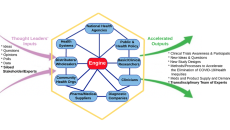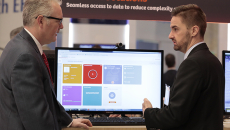Decision Support
In the COVID-19 era, health systems recognize that existing data infrastructure is inadequate. Here are three things large datasets need to be useful.
Health systems that refuse to see themselves as engineering houses risk falling behind in their ability to properly leverage artificial intelligence and machine learning.
As COVID-19 continues to surge in Los Angeles, LANES is enabling free-flowing data insights – medical, behavioral and socioeconomic ─ to close information gaps and improve clinical decision support for better outcomes.
Workforce
CIOs need to look beyond just EHRs and explore stand-alone platforms to enhance care delivery – keeping focused on reliable patient data and streamlined clinical workflows.
An integrated coaction model, or iCaM, is ideal for addressing complex multispecialty parameters associated with health inequities and COVID-19.
COVID-19
COVID-19 has revealed a lot about the world we live in. It has reinforced the possibilities that open up when we collaborate and come together, united towards a common cause; in this case, of defeating the spread of SARS-CoV-2 says Atif Al Braiki, CEO, Abu Dhabi Health Data Services LLC (Malaffi).
Analytics
A healthcare system in which stakeholders share, adopt and apply medical knowledge in real time enables improved care, accelerated workflows, streamlined business processes and a better balance of resources with demand.
Accurate outbreak data reporting depends on a robust, standards-based and interoperable information infrastructure. We still have a long way to go.
Electronic Health Records
When EHRs can learn – gather and remember – what works best for each user, they can attain maximum efficiency.
Workflow
Transforming healthcare usability must include standardization to evaluate effectiveness, efficiency and satisfaction.









